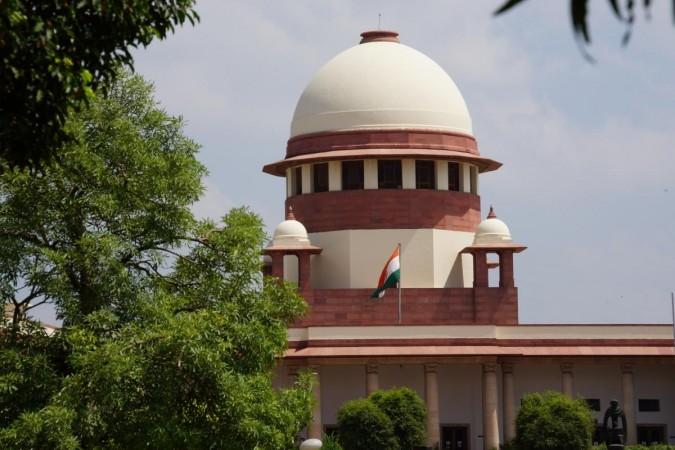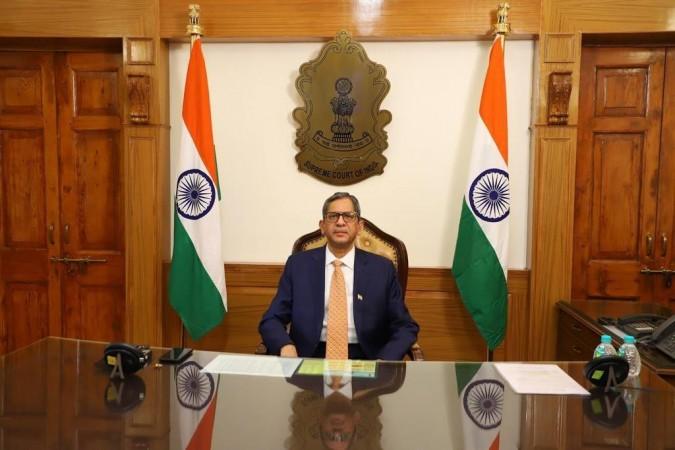Justice Rohinton Fali Nariman is set to retire as the Supreme Court judge on August 12, 2021. With him demitting office, the second senior-most judge of the apex court, the strength of judges will come down to 25.
Six days later, with the retirement of Justice Navin Sinha on August 18, the staggering low count will drop to 24, ten short of the sanctioned strength.

The writing has been on the wall, as five judges of the Supreme Court have been set to retire by August end of 2021. But in March this year, the five-member Collegium, led by former Chief Justice SA Bobde, strived to reach a consensus when it came to filling up these five vacancies in the Apex court.
The Supreme Court Collegium (group of five senior most judges, including the CJI) has infamously been in disagreement over the recommendation of names to the government for elevation to the Supreme Court. All the meetings called by Justice Bobde in the matter proved to be inconclusive.

In this case, the sources said that one major reason for lack of consensus in the collegium was over recommending Justice Akil Kureshi, Chief Justice of Tripura High Court. His appointment was also believed to be a point of contention by the Collegium headed by former CJI Ranjan Gogoi.
During his tenure as a Gujarat High Court Judge, in the year 2010, Justice Kureshi had sent Amit Shah to police custody in the Sohrabuddin fake encounter case.
As for what ails the system of Supreme Court Collegium, several essays, editorials and opinion pieces by former judges of India have often mentioned the system's ability to promote nepotism and lack of transparency.
It must be noted that once a collegium submits its recommendations, the Law Ministry has the option of sending the recommendations back for consideration. But if the collegium resubmits them, then it has to approve the names.
New appointments - why the delay?
Back in March, with barely a month left for Chief Justice of India Sharad A Bobde to retire, the Supreme Court Collegium discussed options while trying hard to maintain a tightrope balance between proportionate representation from various High Courts before finalising names to recommend to the government for appointment.
Last time the strength of SC judges dropped this low
The last appointments to the Supreme Court were made back in September 2019, when Justices Krishna Murari, S. Ravindra Bhat, V.Subramanian and Hrishikesh Roy were appointed.
In 2009, the sanctioned strength of Supreme Court judges was increased from 26 to 31, including the Chief Justice of India. A decade later, in 2019 this number was further increased from 31 to 34. In India, Supreme Court judges retire at the age of 65, which is why Indian judges, especially the Chief Justices of India have a much shorter time span in the top court, than in other countries.
In the UK, judges retire at the age of 75 and at the age of 70 in Canada, Australia, Belgium and Norway, while they work for lifetime in the US, subject to physical and mental fitness.

What carries weight during the SC judge appointment process
While there are no constitutional or legal mandates involved in the process of recommendation or even appointment of Supreme Court judges, certain conventions exist. These include paying due attention to seniority and proportionate representation from the High Courts.
As per the information published by the Law Ministry on March 1, the senior most in the reckoning among the Chief Justices of the 25 High Courts, who do not retire in the year 2021, include Karnataka Chief Justice A.S.Oka, Tripura Chief Justice Akil Abdulhamid Kureshi, Delhi Chief Justice D.N.Patel and Gujarat Chief Justice Vikram Nath. They all belong to parent High Courts which already have multiple representation in the Supreme Court.
Huge backlog of cases in Apex Court
The strength was increased to ensure the pending cases decrease and the backlog does not increase. As per a written reply furnished by the Law Ministry to a question put in Rajya Sabha, there was a backlog of roughly 60,000 cases pending in the Apex Court in 2019.
"You would recall that way back in 1988, about three decades ago, the judge strength of the SC was increased from 18 to 26, and then again after two decades in 2009, it was increased to 31, including the CJI, to expedite disposal of cases to keep pace with the rate of institution. I request you to kindly consider, on top priority, to augment the judge strength in the SC appropriately so that it can function more efficiently and effectively as it will go a long way to attain the ultimate goal of rendering timely justice to the litigant public," wrote then CJI Ranjan Gogoi.
Accordingly, Union Cabinet approved increasing the number of judges in the top court from 31 to 34, including the Chief Justice of India. Even the current low number of judges on the bench means there is lesser number to handle the huge workload amid increasing number of cases, an issue that's been flagged multiple times.

















